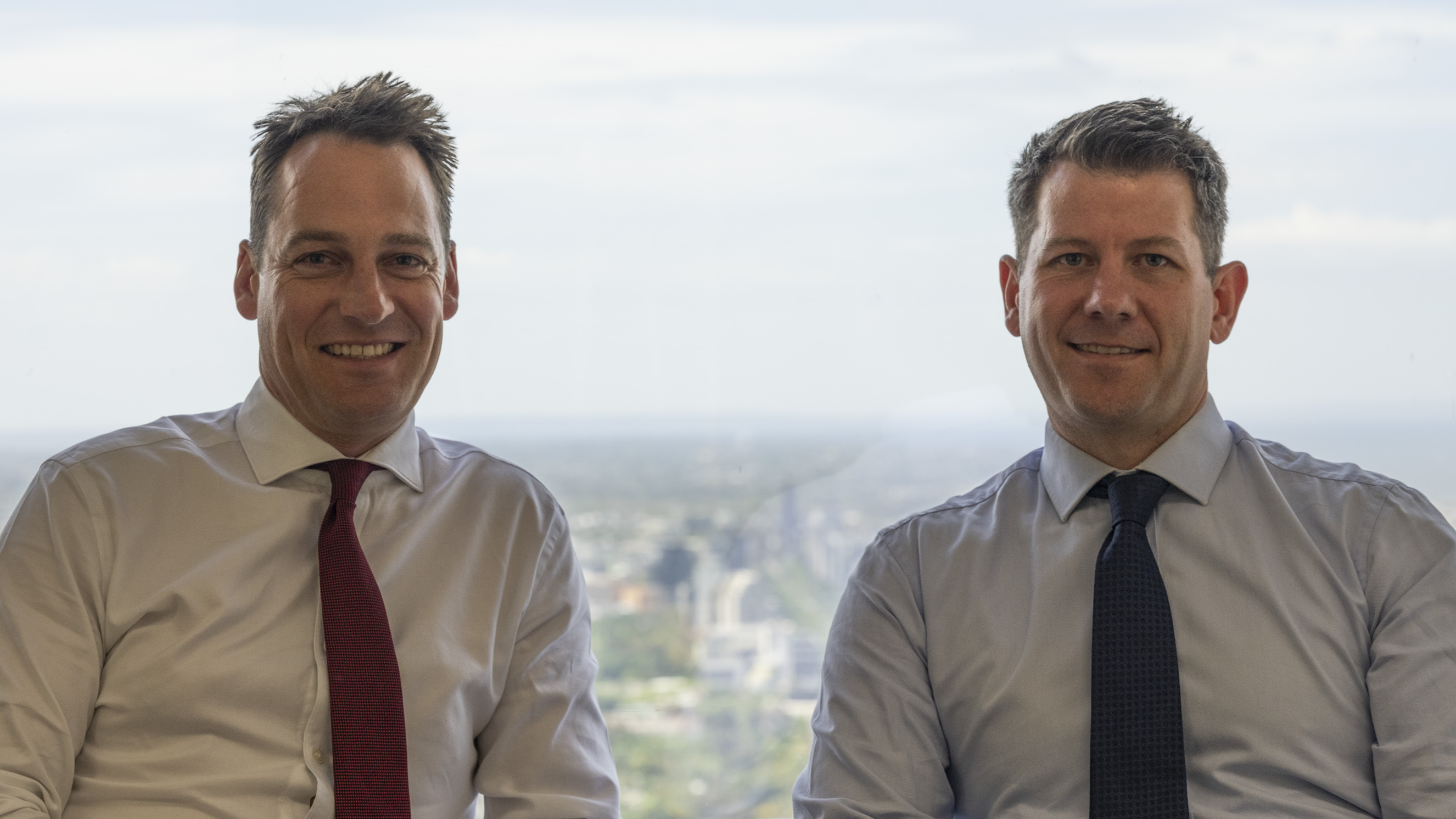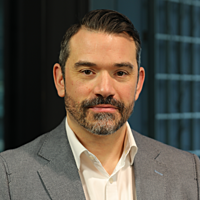Three years after the storm, LSN’s message is clear: Small caps still have legs
In October 2022, I sat down with the two Nicks — Sladen and Leitl — of LSN Capital Partners, who had launched their Small Cap Fund less than a year earlier.
The tenor of that conversation was about survival. It was not long after launch, in early 2022, that the sharemarket was smashed. Growth assets and fully priced small caps were pounded, as central banks attempted to stuff the recently escaped inflation genie back into the bottle.
“We look at it and say our investment process has been really, really tested through the first nine months of this year”, was the comment from Sladen at the time.
Fast forward to today, and the tone couldn’t be more different.
The LSN Emerging Companies Fund is travelling well. Funds under management have comfortably surpassed $100 million, and for the three years to September, the fund has delivered 21.8% per annum, handily outperforming the S&P/ASX Small Ordinaries Accumulation Index’s 15.5% annual return over the same period (to September 2025).
Through the baptism of fire in early 2022, LSN didn’t just survive – it has thrived. Approaching the four-year anniversary of the Fund, I sat down with Sladen and Leitl again to get their take on the resurgence in small caps and the opportunities they are finding most appealing right now.

The current outlook
“The outlook is attractive,” says Sladen of the current small-cap landscape.
“We think that the growth and valuation on offer still in small caps is far superior to the ASX Top 100.
We’re still finding plenty of companies growing strongly at attractive valuations.”
That confidence is underpinned by real earnings growth.
Sladen adds that the average earnings growth of the portfolio is currently 17% per annum, which was increased from 15% prior to earnings season.
“It’s the first time in four years of reporting seasons we’ve actually upgraded expectations”, he adds.
Leitl points to the breadth of that strength: “Aussie Broadband can compound at over 15% for the next three years, Codan 20%, Judo 30%, MAAS Group 20%. For the first time in a while, companies are seeing green shoots.”
What’s driving the outlook?
After several tough years, LSN sees the earnings recovery as structural, not cyclical.
“Interest rates have come down and inflation has eased,” Sladen says – a far cry from the situation in early 2022, when inflation was rampant.
He adds that through that period, companies were forced to make tough decisions and really get their cost centres under control – which is paying dividends now.
“Most companies have got a reasonable handle on their cost base. Cost bases are under control, so operating margins have been expanding.”
Leitl contrasts this with large caps: “The reverse has happened at the top end. Big companies in mature industries have increasing costs and muted top line growth. CSL, for example, was down 17% through reporting season – it’s the biggest fall in history- and it just reminds investors that volatility doesn’t only live in small caps.”
That divergence is driving more and more interest in small caps - and LSN is leaning into it.
Commodities, capital and crowding: Where the team sees risk and reward
While macro risks, including slower growth, persist, Leitl is less worried about a growth slowdown than another factor.
“The bigger risk would be if inflation re-emerges which puts upward pressure on interest rate expectations” he adds.
He sees commodities acting as a cushion: “Iron ore, gold, copper – commodities are booming right now”. And whilst different commodities have rallied at different times, having exposure across the complex has been key to LSN’s outperformance.
“The fund has recently benefitted from its exposure to the Materials sector. We’ve got exposure to gold, copper, and building materials. We’ve held Sandfire (ASX: SFR) until recently, MAC Copper (ASX: MAC), which got taken over, and we are positive on the outlook for Wagners (ASX: WGN), given its strong exposure to Queensland’s infrastructure pipeline, including projects linked to the 2032 Olympic Games", adds Sladen.
But not everything looks cheap, he warns, so selectivity remains key.
The team’s focus remains firmly on under-researched names where price discovery is still alive – and it just so happens that a lot of names that fit that bill currently sit below the $1 billion market cap threshold.
“We’ve got about 40% of the portfolio below a billion dollars,” says Sladen.
“That’s where we’ve been finding opportunities - stocks that are less covered and have been left behind. Some have already started to re-rate.”
Leitl adds that capital markets are finally thawing: “Cog Financial (ASX: COG) and FireFly Metals ASX: FFM) have both raised money in recent months. Stocks are trading well above issue. Capital markets are improving, and secondary issues are performing.”
The IPO window, long shut, is creaking open, and there is expected the be a mini-rush before the end of the year – some of which the team are eyeing closely.
“The window is between now and December,” says Sladen. “Carma, the online used-car platform, looks interesting. We put a bid in. If they can execute, it’s a good long-term business.”
Chasing growth, but not at any cost
The team reduced Neuren Pharmaceuticals (ASX: NEU) as it approached its valuation target and added Cogstate (ASX: CGS), a profitable clinical trials data company.
“They’ve got partnerships with global players,” says Sladen. “It’s profitable, not particularly well covered, and execution has been good.”
Holdings now sit at 37 names – towards the upper end of the historical range, with about 5% cash. “We’re basically fully invested,” Sladen says, adding that the number of holdings reflects the fact that the team are finding plenty of high-quality opportunities in the current environment.
Stocks of interest
When asked about their best performers over the journey, Leitl doesn’t hesitate: “Zip Co (ASX: ZIP).”
“We bought Zip at 30 or 40 cents, sold it at $1.50. It went to $3.50, collapsed, and we bought it back around $1.50,” he says.
Aussie Broadband (ASX: ABB), held by plenty of small-cap managers right now, has been a core holding for LSN “almost right from the start,” adds Sladen.
“They’ve now hit that sweet spot of compounding earnings, good cash flow, and M&A opportunities.”
Another standout is GenusPlus Group (ASX: GNP), a play on the electrification boom.
“The pipeline of opportunities across energy infrastructure and decarbonisation is significant and this underpins a long runway for growth for Genus,” says Leitl.
“The founder owns 50% and is building a track record of strong execution. Whilst the stock has done well, earnings could double again over the medium term.”
The fund has also rotated its retail exposure.
“We sold Premier Investments (ASX: PMV) and reallocated into Adairs (ASX: ADH) and Universal Store ASX: UNI),” Sladen notes.
“Strong execution has seen Universal deliver 15% EPS CAGR over the last 3 years and we expect this to continue.”
The price of admission
Three years ago, the two Nicks were fighting to prove their process through one of the toughest small-cap markets in decades.
Today, the LSN Capital Partners Emerging Companies Fund stands as one of the better-performing boutiques in its space - disciplined, fully invested, and optimistic about what comes next.
And whilst volatility and challenges haven't completely evaporated, Leitl acknowledges that's the price of admission;
“We’re used to volatility in small-cap land. When stocks miss, they fall 20-30%. But that’s the game. It’s where the opportunities are".
4 topics
1 fund mentioned
2 contributors mentioned

